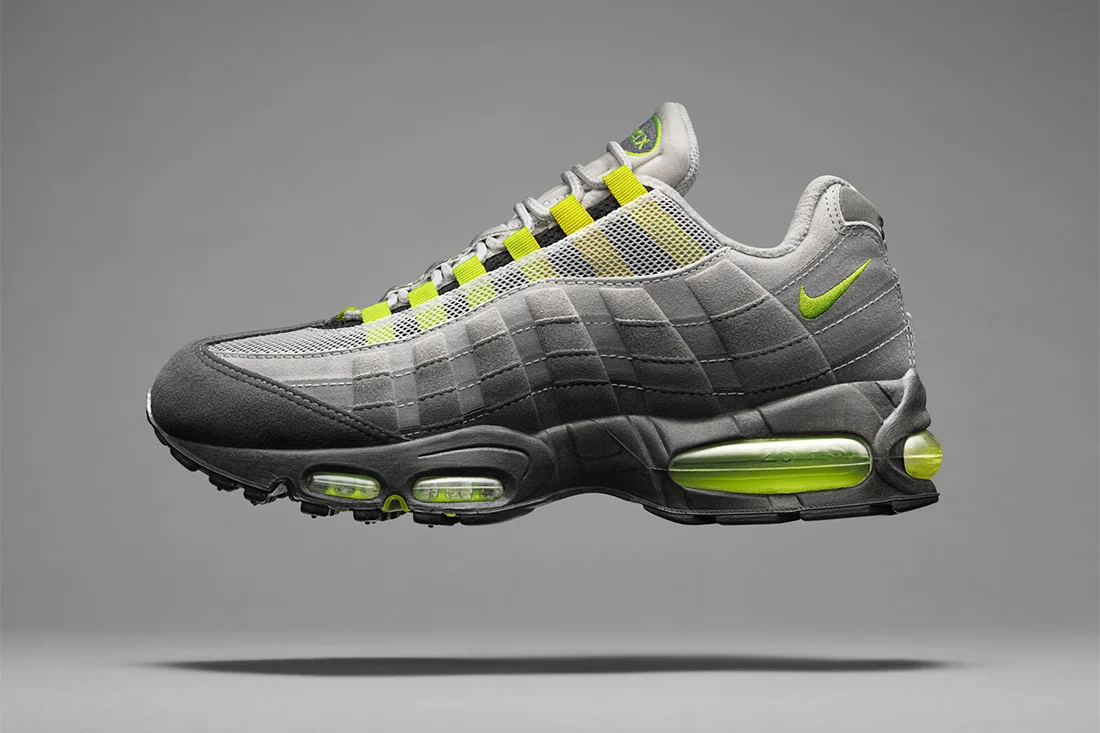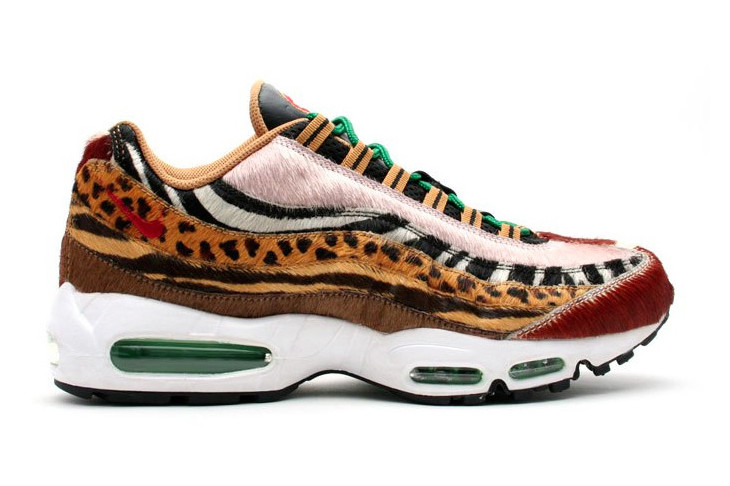Nike Air Max 95

Tinker Hatfield often challenged the designers at Nike to tell him the story behind a design. One rainy day in Beaverton, 95 designer Sergio Lozano was staring out of the office window into the trees. He imagined the water eroding the landscape and unearthing the strata below. The image of the layers resonated once more when he considered the anatomy of a foot, layered with muscle fibres and flesh. The gradient of panels on the upper of the Air Max 95 is the manifestation of that very thought progression.

With its unique colorway, Swoosh placement, and dual air-powered cushioning system, the unapologetically brash Air Max 95 quickly progressed into a youth culture icon. This was especially so throughout Europe and Australia.
A smaller following in America includes much of the hip-hop community, with artists like Gucci Mane and Danny Brown having dropped bars about the sneaker. “I’ll kill you if you try me for my Air Max 95s,” rapped The Game in “Hate It Or Love It” (2005) as a direct reference to the Bloods adopting the Air Max 95 as their signature shoe, while the Crips had the Air Max 98s. Other fans of the beloved sneaker include 2 Chainz, Big Boi, Eminem, The Game, Busta Rhymes, DJ Khaled, Nelly, T.I., T-Pain, Wale, Spike Lee, LeBron James, Kevin Durant, Floyd Mayweather, Jr., and J.R. Smith.
The 95 was a brand new approach to runner cushioning by being the first-ever shoe to also feature the visible Air unit in the forefoot. It was also the first Air Max model to have a black midsole. Despite these innovations, the Air Max 95 was considered an outcast. Even the advertising was quite unconventional for Nike – check out this retro commercial advertising the bold atmos x Nike Air Max 95 2006 Supreme “Animal” silhouette that was made in collaboration with the Tokyo-based streetwear boutique.

atmos x Nike Air Max 95 2006 Supreme “Animal”